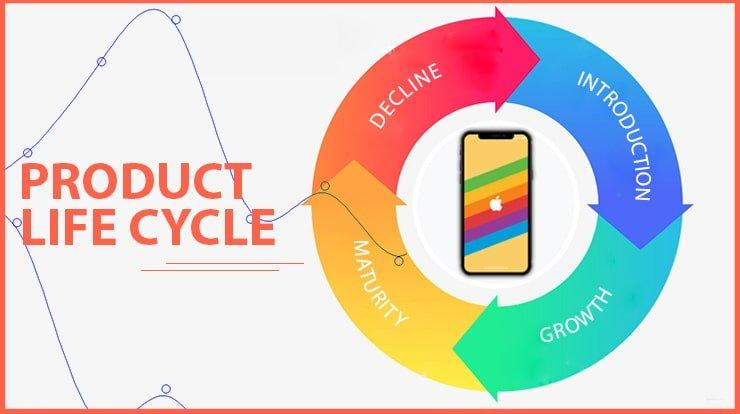Product life cycles (PLCs) play a crucial role in shaping the strategy and performance of consumer electronics. The PLC refers to the stages a product goes through from its introduction to its eventual decline in the market. Understanding how the PLC affects consumer electronics helps manufacturers, marketers, and retailers navigate the challenges of competition, innovation, and consumer demand. Here’s how the product life cycle influences the consumer electronics industry:
1. Introduction Stage:
- High Investment: At the introduction stage, consumer electronics products typically require significant investment in research, development, and marketing. Companies aim to create awareness, educate consumers, and generate excitement about the product.
- Premium Pricing: Many consumer electronics are launched with premium pricing, particularly if they are innovative or represent a new technology. For example, the first generation of smartphones or smartwatches often has a higher price point, aimed at early adopters and those willing to pay for cutting-edge features.
- Low Sales Volume: Sales are initially low as the product is introduced to the market, and only a small group of tech enthusiasts or early adopters are interested in purchasing. Companies often have to rely on strong brand loyalty and differentiation during this phase.
2. Growth Stage:
- Rapid Sales Growth: As the product gains consumer acceptance and the market begins to understand its value, sales grow exponentially. In the consumer electronics sector, this is the stage where products like smartphones, gaming consoles, or laptops gain traction.
- Price Reductions: As production processes become more efficient and competition increases, companies may lower prices to attract a broader consumer base. This often helps boost demand further and allows for more aggressive market penetration.
- Increased Competition: As products become popular, competitors enter the market with similar offerings, often leading to price competition, feature improvements, and differentiation strategies. For example, several smartphone brands competing against Apple in the market is common during this stage.
- Product Variants: Companies often introduce new features, models, or variations to cater to different market segments. For example, a company might release a “Pro” version of a product or offer additional color choices to capture a wider audience.
3. Maturity Stage:
- Slower Growth: At this point, the product has reached widespread adoption and the market is saturated. Sales growth slows as most potential customers have already purchased the product or a similar one.
- Intense Competition: With numerous competitors and similar products in the market, companies often focus on differentiation strategies, such as offering superior customer service, longer warranties, or bundling additional services (e.g., subscription services or extended storage).
- Price Wars and Discounts: To maintain market share, companies may engage in price reductions, discounts, and promotional offers. Manufacturers might also shift their focus to secondary markets (e.g., budget models or refurbished devices) to maintain profitability.
- Innovation for Differentiation: Companies introduce incremental updates, such as improved performance, new features, or design changes, to differentiate their product from competitors. For instance, smartphone manufacturers might focus on improving camera quality or offering longer battery life in their updated models.
4. Decline Stage:
- Sales Decline: As newer, more innovative products are introduced, older products begin to lose their appeal. Consumer interest wanes, and sales decline, sometimes rapidly. Products such as older flat-screen TVs or outdated gadgets fall into this category.
- Product Phase-Out: At the decline stage, companies may choose to phase out the product entirely. They may stop production, withdraw from the market, or focus on servicing existing customers. The product may still be available at discounted prices, often in discount retailers or through online marketplaces.
- Focus on Niche Markets: Some companies may find niche markets for their products in specific regions or demographics. For example, older models of consumer electronics might find a second life in emerging markets where consumers are more price-sensitive.
- Obsolescence: Technological obsolescence often plays a significant role in the decline stage of consumer electronics. Newer technologies (e.g., OLED screens replacing LCDs) can make older products irrelevant.
5. Impact on Innovation and Research:
- Continuous Innovation: To stay competitive, companies must constantly innovate to shorten product life cycles and create new products that will take the market by storm. This drive for innovation leads to rapid development in fields like virtual reality, AI integration, 5G connectivity, and wearable technology.
- Shift Toward Services: As product life cycles shorten, companies in the consumer electronics industry increasingly shift their focus to providing value-added services (such as cloud storage, software subscriptions, or ongoing updates). This shift helps them maintain revenue streams even after the product reaches the decline stage.
6. Impact on Consumer Behavior:
- Consumer Expectations: As products move through their life cycles, consumer expectations evolve. By the maturity stage, consumers expect better performance, additional features, and lower prices. For example, smartphone buyers now expect excellent cameras, fast processors, and long battery life as standard features.
- Frequent Upgrades: In consumer electronics, product life cycles influence the frequency with which consumers upgrade to newer models. For instance, the smartphone market often experiences rapid upgrades, with many consumers purchasing new models every year or two as new features are introduced.
7. Strategic Implications for Marketers and Manufacturers:
- Brand Loyalty vs. New Entrants: Companies that have established strong brand loyalty through previous product life cycles can maintain market dominance during the growth and maturity stages. New entrants, however, must differentiate themselves through innovative features or aggressive pricing.
- Global Market Focus: As products reach the decline stage in developed markets, manufacturers often target emerging markets, where demand for older models can still be strong. Companies may adapt products to cater to regional preferences or offer lower-cost alternatives.
In summary, product life cycles in consumer electronics are crucial for guiding strategic decisions related to pricing, marketing, innovation, and competition. Manufacturers must carefully manage each stage to maximize revenue, stay competitive, and adapt to rapidly changing consumer preferences and technological advancements.














